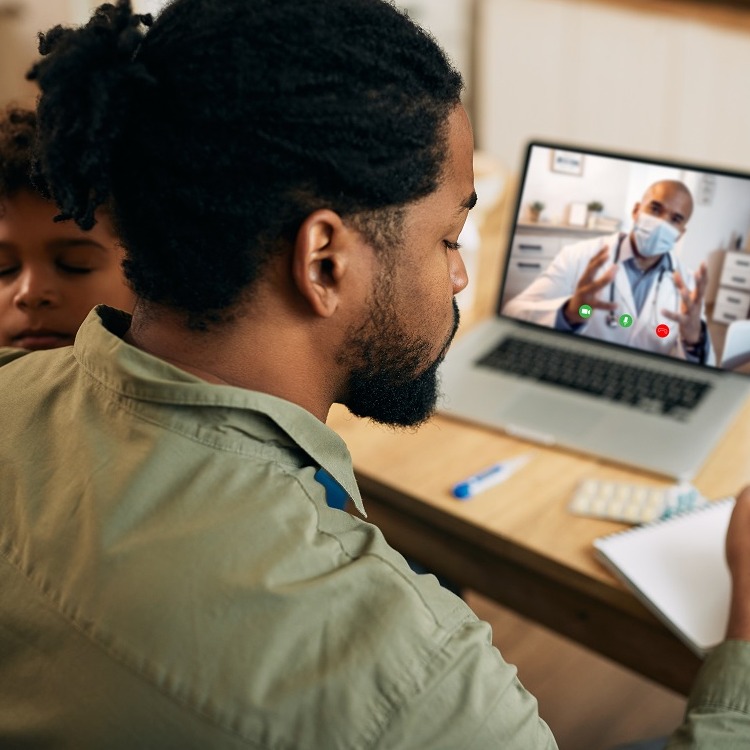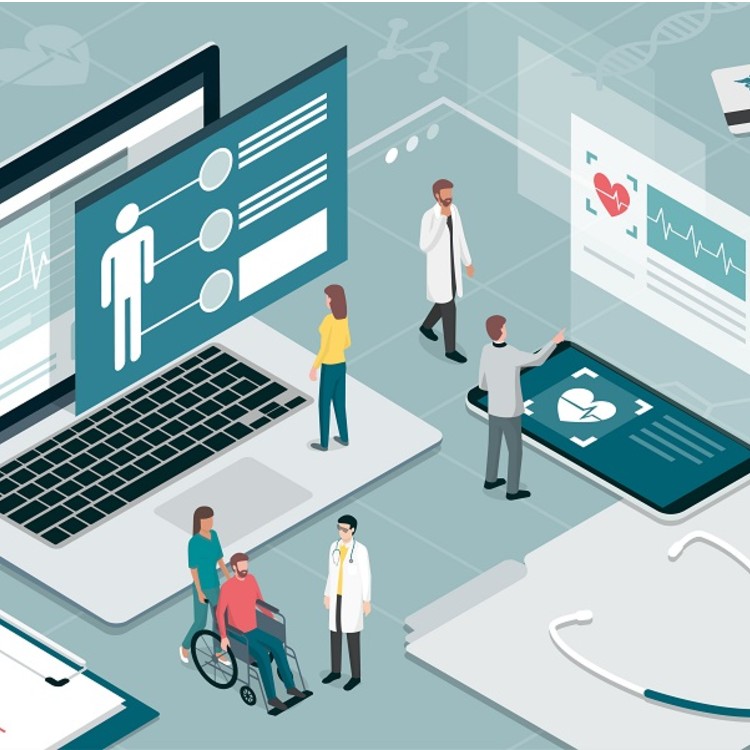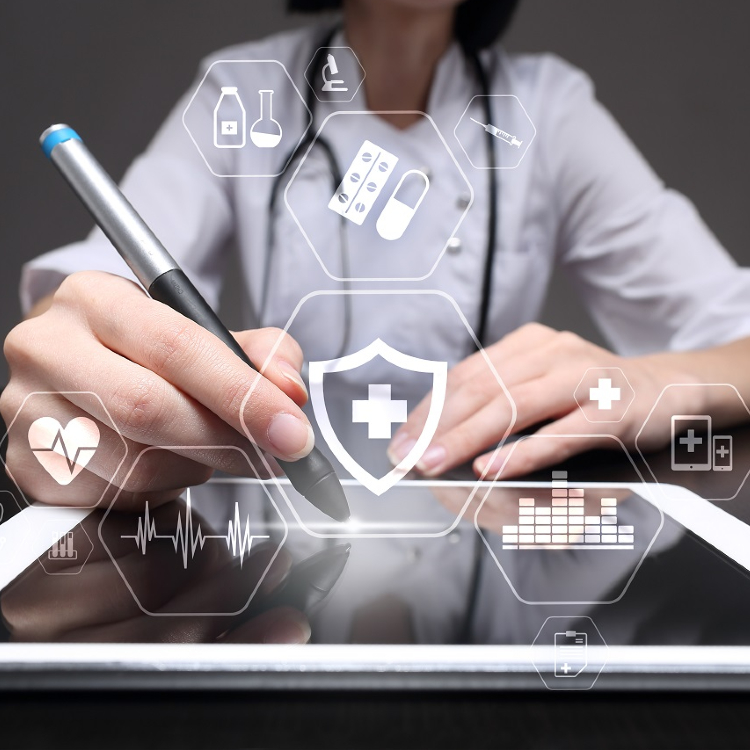The healthcare industry has defied the kind of tech disruption which Airbnb did to hospitality and Uber did to the taxi business. But cloud, AI, IoT and other technologies appear poised to shift healthcare’s focus on treating people after they get sick to a business model of promoting health and prevention. Wearables are an important part of this change.
People are open to wearables as about a third of all adults in the U.S. have tried a consumer device such as a FitBit. Medical-grade wearables do much more, collecting massive amounts of information.
“We have huge data sets of thousands of patients,” said Dr. Arik Eisencraft, Chief Medical Officer of the Israeli company Biobeat Technologies and a medical researcher at the Hebrew University of Jerusalem.
“Some of my colleagues might be insulted, but as time goes by, machines do things better and faster and provide us with an early alert, and it helps us to give better care the same with pathology.”
One of the advantages of wearables he said is it keeps people in their homes.
“Thanks to these technologies it doesn't have to be in the hospital,” he added.
Medicine is just in the first steps of figuring out use cases and business models around remote healthcare.
“We see all kinds of shifts, practical shifts, in the way we are thinking about providing care,” Eisencraft said.
Medicine has eluded the tech disruptions which seemingly overnight rewrote business models in media, telecommunications, transportation and other industries. That doesn’t mean healthcare is untouched by technology. Hospitals are keen on innovations for diagnosis and medical procedures such as AI doing predictive analysis of patients with COVID-19 or natural language processing algorithms reviewing consumer claims of unexpected bills.
“The bigger challenge isn't technology,” said Lisa Suennen, a venture capitalist at the San Francisco-based Manatt Venture Fund, “it's a system design problem.”
Suennen is a tell-it-like-it-is VC who focuses on the healthcare industry. Her blog, Venture Valkyrie, is a must-read for industry insiders looking for plain talk about the complexities of digital medicine.
She even thinks the word digital has lost its usefulness.
“It’s all digital…can we just call it ‘health care’ and move on?,” Suennen asked.
The system design problem Suennen points to is a business model paradox: “The medical system doesn't get paid to keep you healthy, they get paid to treat you,” she said.
This is one reason why healthcare in the U.S. – built to treat preventable lifestyle illnesses such as heart disease, diabetes, and some cancers – is by far the most expensive in the world. The per capita cost in 2019 was $11,582.
Shifting the model to prevention promises to improve people’s health and lower costs. But that shift won’t be fostered by an app like AirBnB or Uber, which empower users with more information. What’s needed is empowering doctors with more patient information. Wearables are one technology that offers that opportunity.
A recent multi-year study demonstrated that a doctor-prescribed mobile phone health app, used by patients at home to collect basic vital health data, can reduce medical costs and improve outcomes. While it is a confirmation of what was already suspected, the lead researcher, Saligrama Agnihothri, a professor of supply chain and business analytics at Binghamton State University in New York, noted the difficulty of implementing it into the medical system.
“One of the barriers to wider adoption of mHealth apps by providers,” he wrote, “is the uncertainty around operational implications of using such an app in practice.” One operational implication is to get doctors and patients to use the technologies.
“Doctors are usually overwhelmed,” Suennen said. “They barely have time to do even their basic reporting. And even when people know a lot about their own health or risks, they often don't do anything about it.”
But a bigger issue is the medical system is not set up to sell remote monitoring or even prevention services in the first place. “How do hospitals and physicians get paid to look at this data, to make it simple, to prescribe it?”
Changing mindsets is an unavoidable but not insurmountable challenge.
“There’s definitely a growing interest,” she added. “And there are even truly medical-grade mobile devices that measure things like biometrics, respiratory and heart conditions. They're starting to be more common, but they're not ubiquitous yet.”
Medical-grade wearables are technological wonders.
“When I travel I always have on myself, one of our Biobeat wrist monitors,” said Eisencraft.
Biobeat makes a medical-grade wrist-worn device that measures 12 vital health statistics.
“When I’ve heard the announcement, ‘Is there a doctor on board?’ I try to help.” Checking the person’s vitals, Dr. Eisencraft provides heart rate and blood pressure readings.
“But then I check for stroke volume, cardiac output and systemic vascular resistance. And they go, ‘Whoa, how do you have that?’”
He said these devices, which patients wear at home, have entered the arena of echocardiograms and catheters.
But in perspective, the wearable is a sensor – the cloud and AI platform is where the magic happens.
“We are a cloud-based company,” he said. “There is no limit to how many patients can be monitored in different places and how much data can be collected. With AI we can help physicians make sense of it or they can perform their own analysis.”
Such technologies promise to change the paradigm. Where once a yearly blood panel and a checkup sufficed, more comprehensive data gives health care professionals a foundation to promote health.
“I think that we are really witnessing what probably will be defined a few years from now as a kind of a revolution because there are multiple novel technologies that are now being implemented more and more,” said Eisencraft.
“And it's quite different from how it was, let's say, a decade ago,” he said. “And this really allows you to better understand what is happening, to allow focusing on prevention rather than reaction.”
Suennen expects a slow-motion disruption – if it can be called that – as the health care industry has been slow to embrace change in general.
“I think it will change over the next 10 years,” she said.
There are more medical-grade products being developed and taken to the FDA for approval. That’s helping to build a body of work demonstrating value both scientifically and economically. And the industry is starting to see a move towards payment for remote monitoring, ongoing monitoring, and digital formularies for doctors to prescribe wearables more readily.
“I think we're on our way there and it will not be overnight, but it will happen.”
Editor’s note: Learn more about Nutanix healthcare solutions here.
Jason Lopez is executive producer of Tech Barometer, the podcast outlet for The Forecast. He’s the founder of Connected Social Media. Previously, he was executive producer at PodTech and a reporter at NPR.
© 2021 Nutanix, Inc. All rights reserved. For additional legal information, please go here.









